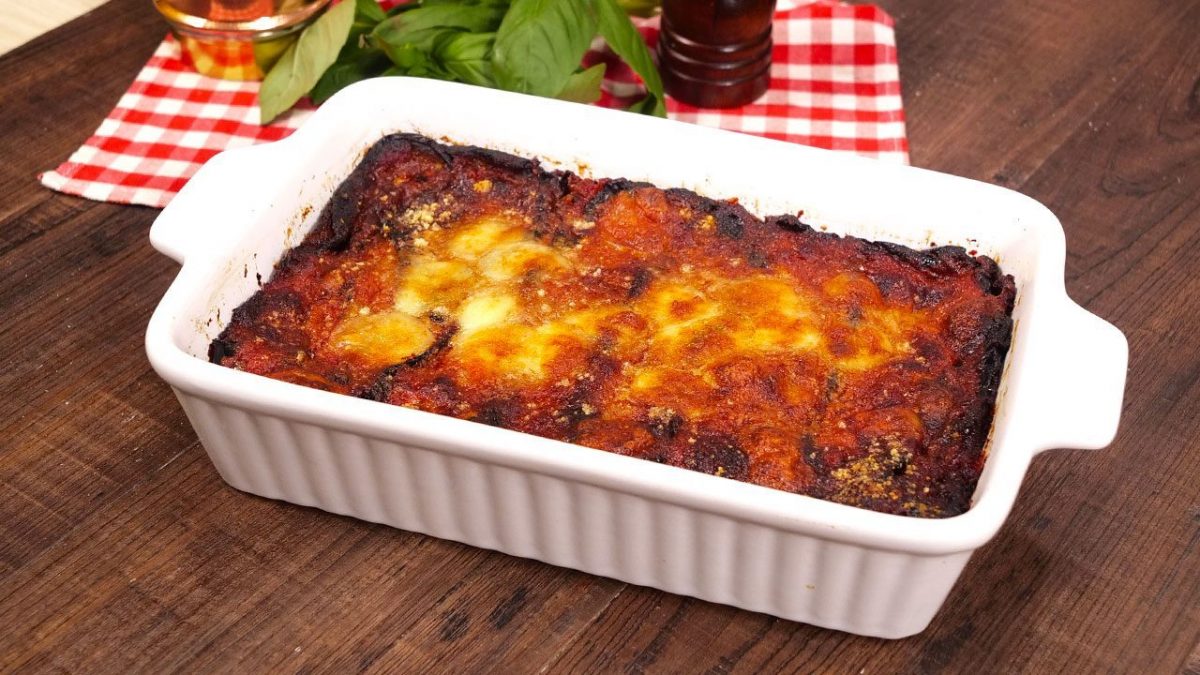
Italian-Style Eggplant Parmesan, or Parmigiana di Melanzane, is one of the most famous dishes of Italian cuisine. It is a main dish made with fried eggplants arranged in layers with tomato sauce, mozzarella, grated cheese and basil, all baked in the oven.
The origins of this recipe are disputed between various regions of Southern Italy, particularly Sicily and Campania. The name "parmigiana" derives from the Sicilian "parmiciana", a dialect term that indicates the wooden strips of the shutters, arranged in a similar way to the parmigiana in the pan. Therefore, Parma and Emilia Romagna would have nothing to do with it. In any case, the eggplant parmigiana has been included by the Ministry of Agricultural, Food and Forestry Policies in the list of traditional Italian agri-food products, as a typical product of Campania, Sicily, Calabria and Puglia.
What is Italian-Style Eggplant Parmesan?
Eggplant Parmigiana, or "Parmigiana di Melanzane," is a beloved classic of Italian cuisine with roots that trace back to Southern Italy, particularly in regions like Campania, Sicily, and Calabria. Though the exact origin is debated, the dish likely evolved during the 18th or 19th century, combining local ingredients such as eggplants, tomatoes, basil, and cheese. The term "Parmigiana" might suggest a link to Parma, but most culinary historians agree it refers more to the style of preparation than the city itself. In its most traditional form, slices of eggplant are lightly fried, then layered with rich tomato sauce, grated Parmesan or pecorino, and mozzarella, then baked to perfection—resulting in a dish that's both rustic and refined.
The journey of Eggplant Parmigiana to the United States began in the late 19th and early 20th centuries, during the wave of Italian immigration. Settling primarily in cities like New York, Philadelphia, and Boston, Italian immigrants brought their cherished family recipes with them. As they adapted to new ingredients and tastes in America, Eggplant Parmigiana became a restaurant and home-cooked staple. Over time, variations emerged—some included meat, others swapped eggplant for chicken or veal—but the dish’s hearty, comforting essence remained the same.
Pro Tips for The Best Italian-Style Eggplant Parmesan
- Opt for firm, glossy, medium-sized eggplants with smooth skin. Smaller eggplants tend to be sweeter and contain fewer seeds, resulting in a more delicate flavor and texture.
- Start with a thin layer of tomato sauce in your baking dish, followed by fried eggplant slices, more sauce, mozzarella, and Parmesan. Repeat the layers, finishing with cheese on top for a golden crust.
- Use high-quality tomatoes, such as San Marzano, and simmer with garlic, basil, and a pinch of sugar to balance acidity. A well-crafted sauce elevates the entire dish.
- Allow the baked dish to rest for at least 10 minutes before serving. This resting period helps the layers set, making it easier to slice and enhancing the overall flavor.
Do You Have to Cook Eggplants Before Making The Parmesan?
Yes, you should cook the eggplants—typically by frying or baking them—before assembling Eggplant Parmigiana. This ensures they’re tender, flavorful, and not overly watery.
Why Do I Have to Soak the Eggplants Before Cooking?
Soaking (or salting) eggplants before cooking helps draw out excess moisture and bitterness, resulting in a firmer texture and better flavor in the final dish.
Can You Make Eggplant Parmesan Without Frying the Eggplant?
Yes, you can make Eggplant Parmesan without frying by baking or grilling the eggplant slices instead—this results in a lighter, healthier version of the dish.
Do You Leave the Skin on Eggplants For Eggplant Parmesan?
Yes, you can leave the skin on eggplants for Parmesan; it helps the slices hold their shape, though you can peel them if you prefer a softer texture.
How Do I Avoid a Soggy Eggplant Parmesan?
To avoid a soggy Eggplant Parmesan, salt and drain the eggplant slices first, cook them (bake or fry) to remove moisture, and avoid using too much sauce when layering.
What is The Difference Between Eggplant Parmesan and Eggplant Parmigiana?
There’s no real difference—"Eggplant Parmesan" is the American name, while "Eggplant Parmigiana" is the traditional Italian term; both refer to the same layered eggplant, tomato, and cheese dish.
Eggplant Parmesan Variations
Here are some popular Eggplant Parmesan variations that add unique twists to the classic dish:
- Grilled Eggplant Parmesan: Instead of frying, eggplant slices are grilled for a smoky flavor and lighter texture—ideal for a healthier version.
- Breaded and Baked: Eggplant is breaded and baked rather than fried, cutting down on oil while still providing a crispy crust.
- Cheese Variations: Some recipes swap or add different cheeses like provolone, ricotta, or fontina for a creamier or bolder flavor profile.
- Layered with Meat: Ground beef, sausage, or even prosciutto is layered between the eggplant slices, making the dish heartier and more filling.
- Vegan Eggplant Parmesan: Uses plant-based cheese alternatives and skips eggs in the breading, catering to dairy-free or vegan diets.
- Eggplant Parmesan Rollatini: Thin slices of eggplant are rolled up with cheese filling and baked in sauce for a fun, bite-sized variation.
- White Eggplant Parmesan: Omits tomato sauce and layers eggplant with béchamel or Alfredo sauce for a creamy, luxurious twist.
What Can I Serve This With?
Eggplant Parmesan pairs well with a simple green salad, garlic bread, pasta, or roasted vegetables to create a balanced and satisfying meal.
Can I Make It Ahead of Time?
Yes, you can make Eggplant Parmesan ahead of time—assemble it up to a day in advance, refrigerate, and then bake just before serving for best results.
Does It Freeze Well?
Yes, Eggplant Parmesan freezes well—just let it cool completely, wrap it tightly, and freeze for up to 3 months. Reheat in the oven for best texture.
How to Store Any Leftovers
Store leftover Eggplant Parmesan in an airtight container in the refrigerator for up to 3–4 days. Reheat in the oven or microwave until hot throughout.
Ingredients
How to Make Italian-Style Eggplant Parmesan
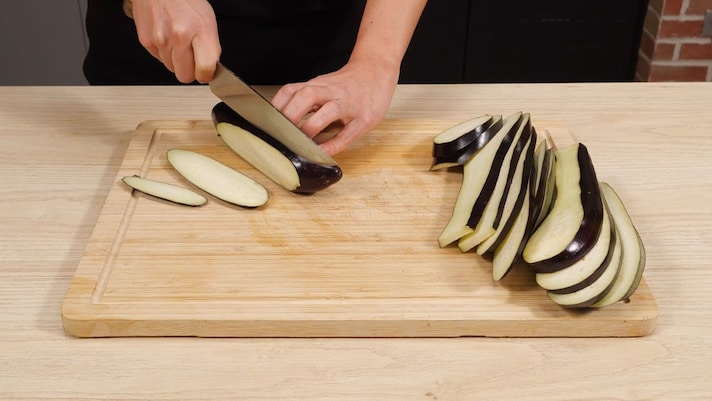
To prepare the eggplant parmesan, first wash the eggplants, trim them and cut them lengthwise into slices about 1/2 cm thick.
To prepare the eggplant parmesan, first wash the eggplants, trim them and cut them lengthwise into slices about 1/2 cm thick.
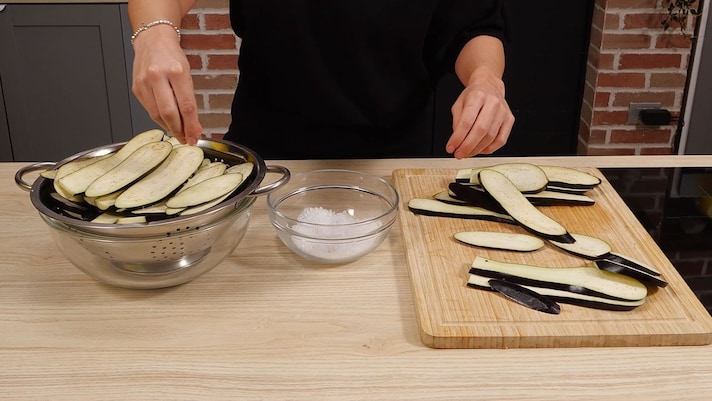
Once cut, drain the eggplants to eliminate their characteristic bitter aftertaste: place them in a colander placed over a bowl, sprinkle them in layers with coarse salt, cover with a weight and then leave them to rest for about 1 hour.
Once cut, drain the eggplants to eliminate their characteristic bitter aftertaste: place them in a colander placed over a bowl, sprinkle them in layers with coarse salt, cover with a weight and then leave them to rest for about 1 hour.

In the meantime, move on to preparing the sauce: heat a drizzle of extra virgin olive oil in a large saucepan, add the onion cut in half and pour in the tomato puree. Then add salt, flavor with a few fresh basil leaves and leave to cook until you obtain a thick sauce.
In the meantime, move on to preparing the sauce: heat a drizzle of extra virgin olive oil in a large saucepan, add the onion cut in half and pour in the tomato puree. Then add salt, flavor with a few fresh basil leaves and leave to cook until you obtain a thick sauce.
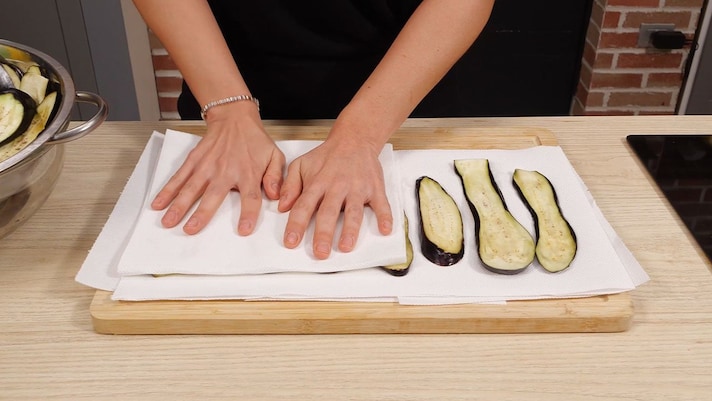
Once the resting time has elapsed, rinse the eggplants under cold running water and pat them dry gently with a sheet of kitchen paper.
Once the resting time has elapsed, rinse the eggplants under cold running water and pat them dry gently with a sheet of kitchen paper.
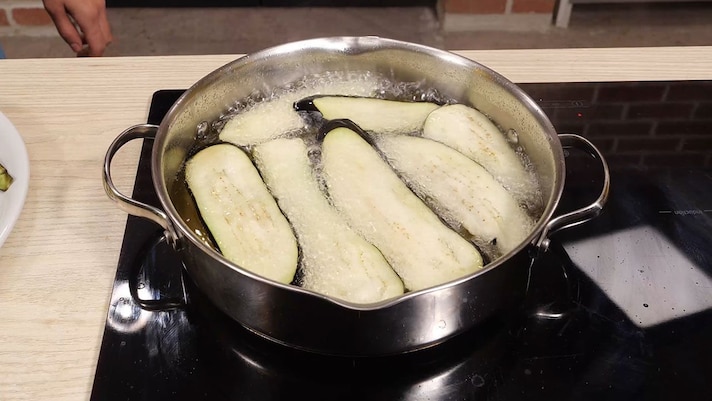
Then fry the eggplants in plenty of boiling seed oil and let them cook until they are golden brown.
Then fry the eggplants in plenty of boiling seed oil and let them cook until they are golden brown.
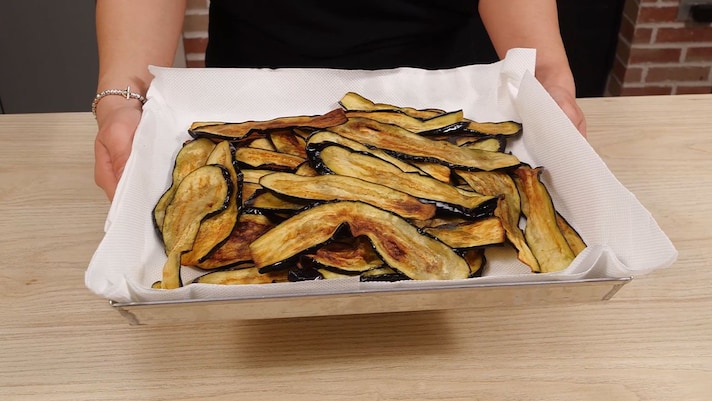
As they are ready, remove the fried eggplants with a pair of kitchen tongs and let them drain on kitchen paper.
As they are ready, remove the fried eggplants with a pair of kitchen tongs and let them drain on kitchen paper.
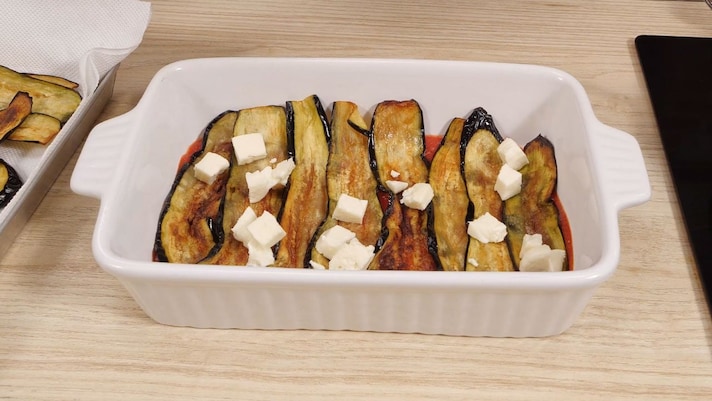
At this point assemble the parmigiana: pour a few spoonfuls of sauce on the bottom of a baking dish and make a first layer of eggplants, then fill with the mozzarella well drained from the whey and cut into pieces.
At this point assemble the parmigiana: pour a few spoonfuls of sauce on the bottom of a baking dish and make a first layer of eggplants, then fill with the mozzarella well drained from the whey and cut into pieces.
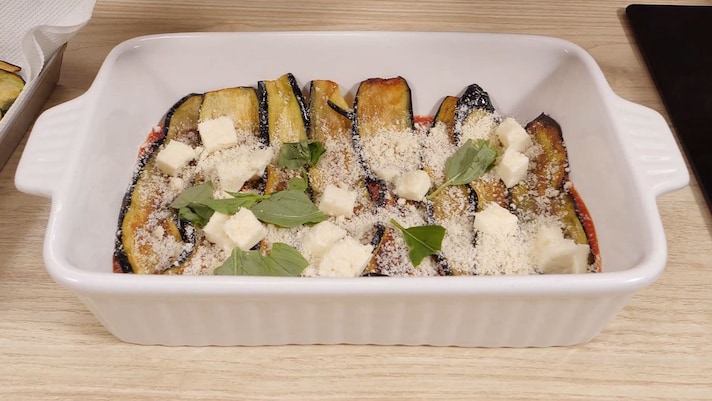
Sprinkle with grated parmesan and season with a little chopped basil and a grind of fresh pepper. Then cover with a second layer of eggplants.
Sprinkle with grated parmesan and season with a little chopped basil and a grind of fresh pepper. Then cover with a second layer of eggplants.
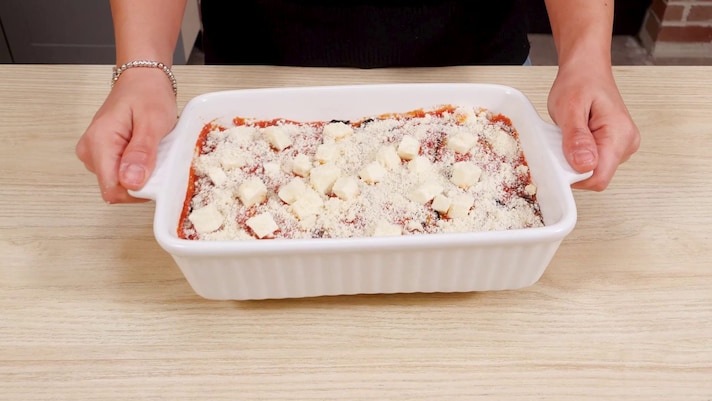
Continue in this way until you run out of ingredients, then finish with a layer of tomato sauce, grated parmesan and diced fiordilatte.
Continue in this way until you run out of ingredients, then finish with a layer of tomato sauce, grated parmesan and diced fiordilatte.
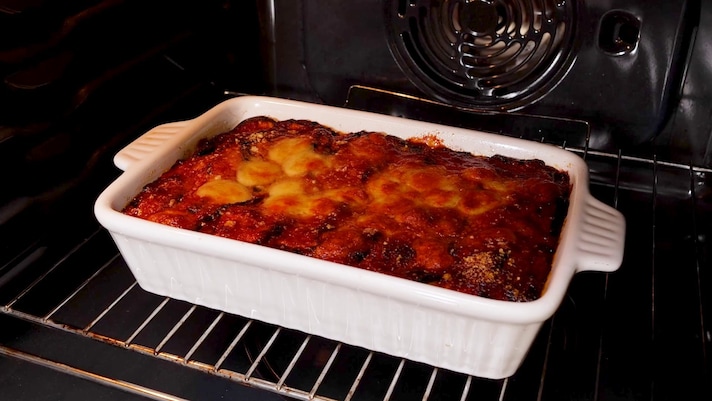
Cook the parmigiana in a hot oven at 350°F/180°C for approximately 30 minutes. Once ready, take the parmigiana out of the oven and let it settle for a few minutes at room temperature.
Cook the parmigiana in a hot oven at 350°F/180°C for approximately 30 minutes. Once ready, take the parmigiana out of the oven and let it settle for a few minutes at room temperature.
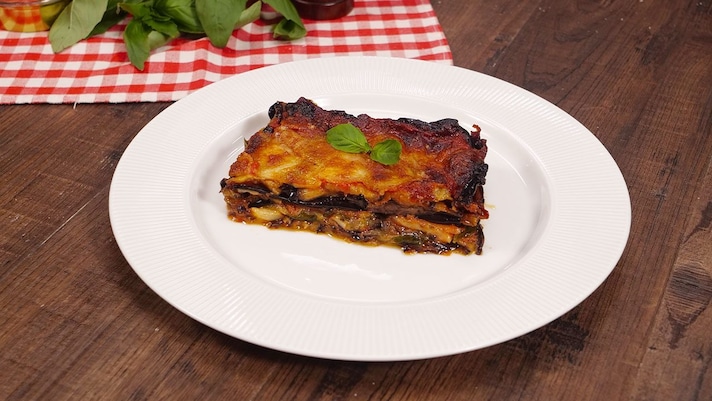
Enjoy!
Enjoy!
;Resize,width=767;)
